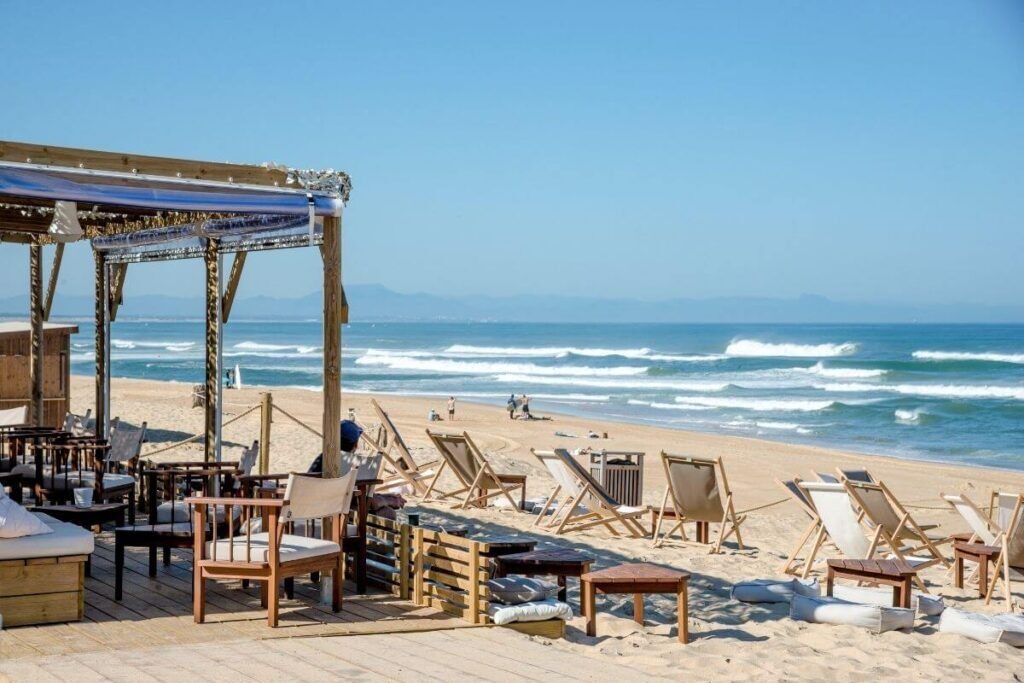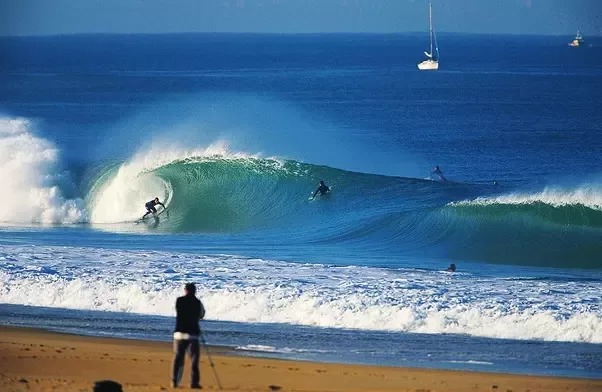
Embark on an adrenaline-fueled journey along France’s southern Atlantic coast, where beach breaks meet mountain trails
For a family holiday that seamlessly combines surfing and exploring the outdoors in southwest France, look no further. Begin your adventure in the renowned surf capital of France, Hossegor, near Biarritz on the Atlantic coast. This vibrant New Aquitaine destination caters to both surfers and non-surfers, boasting a 3km beach with four distinct surfing spots. The northern end of the strip exudes a lively surf culture, while the town center offers an array of charming cafes, exquisite patisseries, chic boutiques, and a bustling market showcasing artisanal products and clothing. Adjacent to Hossegor, you’ll find the picturesque harbor of Capbreton. Although the main swimming beach, La Centrale, may be challenging due to strong currents, Hossegor Lake provides opportunities for paddle-boarding, waterfront dining, and leisurely swims. The serene pine forests surrounding the area offer delightful walks and cycling routes.
From there, venture approximately 170km inland to the enchanting 19th-century spa resort of Luz-Saint-Sauveur in the Hautes-Pyrénées region, located around 30km south of Lourdes. This charming village serves as an ideal base for exploring the breathtaking mountains. Whether you prefer hiking or, even better, exploring on e-bikes, the options are abundant. Additionally, thrill-seekers can partake in activities such as canyoning, whitewater rafting, horse riding, or zip-lining.
With this well-rounded itinerary, you can satisfy your sons’ desire for surfing while immersing yourselves in the natural beauty and outdoor adventures of the Hautes-Pyrénées region.
Surfers can enjoy the waves all year round, not just during the summer season. According to Raphael Tutenuit from Surf Guides, the period between January and March offers favorable conditions with water temperatures rarely dropping below 11°C, accompanied by warm sun. Many surf enthusiasts, including their students, prefer to visit Hossegor during the off-season to relish the tranquility of the beaches, uncrowded waves, and experience a unique, less bustling side of the town.
During our family holiday, our sons, one beginner and one intermediate surfer, eagerly participated in four consecutive days of lessons with Raphael. They began their surfing journey at the gentle waves of La Sud beach, located to the south of Hossegor. On the second day, Raphael convinced them to rise early and catch a mesmerizing sunrise session on the golden sands of Les Culs Nus, north of the town. “Surfing a magnificent wave with the first rays of the sun illuminating its face is an incredible experience,” Raphael described.
As spectators, we enjoyed the session from the beach, sipping on our herbal teas, with the wide dunes and pine forest creating a picturesque backdrop. “That was epic,” exclaimed our 17-year-old son after the exhilarating surf session. By the end of the week, both our sons had made notable progress and were ready to tackle La Centrale beach, another accessible spot suitable for beginner and intermediate surfers.
During our final dinner, which we savored on the vibrant beachside locale of Cabane de la Gravière, our conversation shifted from praising the surf coach extraordinaire, Raphael, to planning our upcoming mini adventure in the Pyrénées and contemplating whether to make a stop at Lourdes on our journey to Luz. Thankfully, we made the wise decision to include it in our itinerary. The countryside surrounding the Catholic pilgrimage site is simply breathtaking. The Sanctuary of Our Lady of Lourdes, with its Marian shrine and other structures, offers a surprisingly serene atmosphere, miraculously untouched by the commercialized trinket shops and overpriced cafes that line its exterior.

Renowned writer Victor Hugo aptly described the Hautes-Pyrénées’ Cirque de Gavarnie as “the colosseum of nature.” As for Luz-Saint-Sauveur itself, it lies gracefully along the banks of the Bastan River, nestled at the foot of the majestic Col du Tourmalet, also known as the Giant of the Pyrénées, which regularly makes its appearance in the Tour de France. In the late 19th century, Luz-Saint-Sauveur gained fame thanks to Napoleon III and Empress Eugenie, who discovered and promoted its thermal spa, Luzéa: Thermes de Luz-Saint-Sauveur. Today, the spa welcomes visitors seeking treatment for various medical conditions, as well as weary hikers or skiers in need of a rejuvenating massage or a relaxing soak in the Jacuzzi (entrance price: £16).
Our accommodation for the trip was the charmingly French Hôtel Les Templiers, an eco-friendly establishment featuring shuttered windows and a vine-covered entrance. It was situated in a quaint square that overlooked the 12th-century church of the Knights Templar. On our first day, we embarked on a 20km drive to the village of Gavarnie, where we embarked on the highly recommended hike through the awe-inspiring Cirque de Gavarnie. This captivating 8.5km trail encircles a magnificent limestone semi-circle, recognized as a UNESCO World Heritage site. The cirque is surrounded by some of the Pyrénées’ tallest peaks, including Mont Perdu. The hike commences alongside the flowing river Gavarnie and gradually leads to the steep walls of the breathtaking cirque, which spans an impressive 3,000m in width and reaches a height of 1,500m. Victor Hugo eloquently described this natural wonder as “the colosseum of nature.” As we descended from an elevation of 423m, we were greeted by the grand cascade, one of the highest waterfalls in Europe. It was a perfect spot to pause for a picnic or indulge in a traditional lunch on the terrace of the Hôtel du Cirque et de la Cascade.



